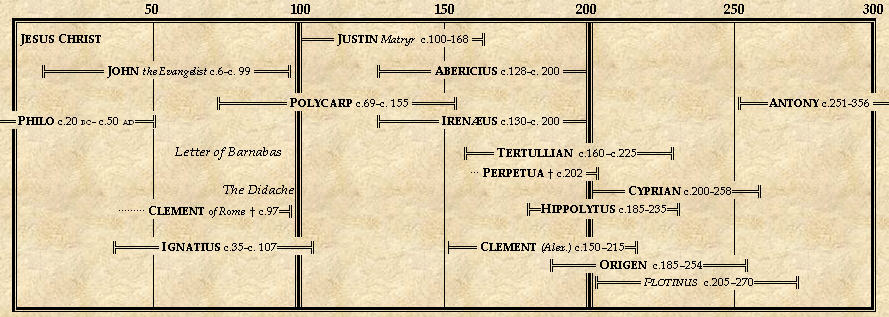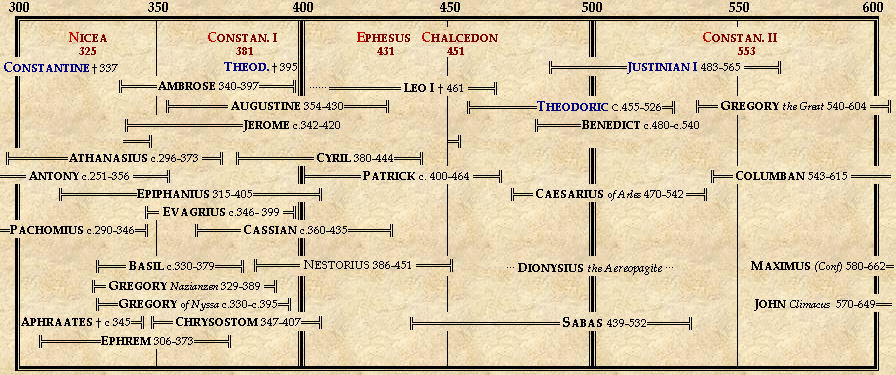|
|
The Last Supper, St. Apollinare, Ravenna |
|
|
The Last Supper, St. Apollinare, Ravenna |
THE Didache and the writings of Clement of Rome, Ignatius of Antioch, and Hippolytus afford a glimpse of how the theology and practice evolved during the first Christian centuries:

THE Didache (?c.90) describes itinerant “apostles, prophets, and teachers” who should be replaced by local bishops (episkopoi) and deacons (diakonoi).
CLEMENT of Rome (?c.95) similarly describes two orders: [1] bishop-elders (he uses presbyteroi and episkopoi interchangeably) who are the successors of the apostles; and [2] deacons (diakonoi).
IGNATIUS of Antioch (c.105) distinguishes three separate orders: [1] the [monarchical] bishop (episkopos); [2] his immediate assistants, the elders (presbyteroi); [3] and the ministering deacons (diakonoi).
IN the threefold orders of Hippolytus' Apostolic Tradition (c.230), [1] the bishop alone is empowered to ordain clergy by the laying on of hands. [2] The elders (presbyteroi) share to some extent the clerical state with the bishop; but they cannot ordain. [3] The deacons (diakonoi) are at a separate level of service, and do not share the clerical state of the bishop to the same extent that the elders do. [“Non-ordained”] ministries of confessors, widows, virgins, readers, and subdeacons are also described.
THE Didascalia Apostolorum (?c.220) emphasizes the priestly ministry of both episkopoi (“high priests”) and presbyteroi (“priests”) The role of the deaconess is explained: they teach women and accompany them at baptism, performing the anointings.

THE fourth-century Apostolic Constitutions include texts from the Didache and Hippolytus. The threefold clerical orders have stabilized as Hippolytus described, with clearer distinctions between the ministries of deaconess, subdeacon, lector, exorcist and widow.
This Webpage was created for a workshop held at Saint Andrew's Abbey, Valyermo, California in 2000